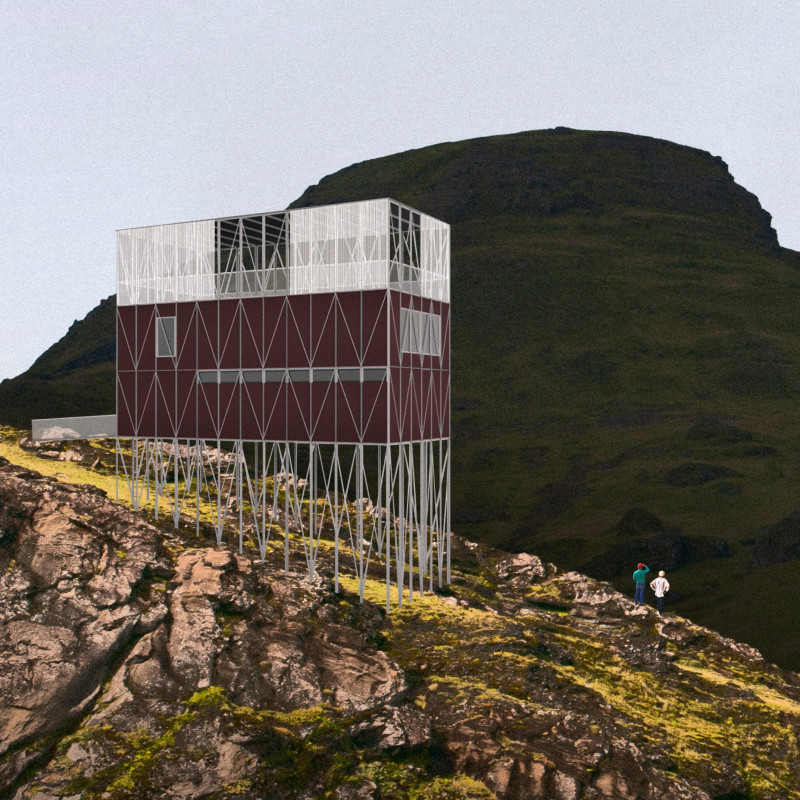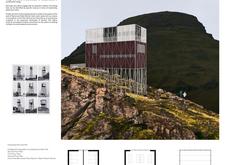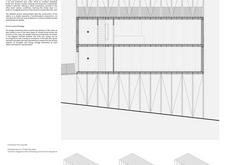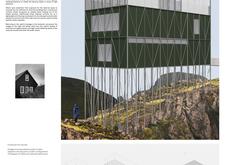5 key facts about this project
At its core, the cabin serves as a retreat for trekkers and nature enthusiasts, emphasizing communal living while offering spaces for solitude and reflection. The layout thoughtfully separates shared areas, such as the kitchen and living rooms, from the private sleeping quarters, creating a flexible space that accommodates various group sizes and dynamics. This intentional arrangement encourages social interaction among visitors, while also providing personal spaces for rest.
A defining feature of the project's architecture is its elevated structure, which raises the living spaces above the ground. This not only enhances views of the dramatic landscape but also protects the building from snowfall and other weather elements prevalent in Iceland. The elevated design minimizes ecological disruption, allowing the local flora and fauna to thrive undisturbed. Moreover, it allows for a greater connection between the inhabitants and the expansive environment, inviting occupants to engage with the beauty of the natural landscape.
The materiality of the cabin significantly contributes to its identity. The use of structural steel provides a strong, lightweight framework that facilitates rapid construction. Concrete features are integrated into the foundation, ensuring long-term stability amid the ever-changing Icelandic weather. The exterior is clad in aluminum sheet materials, presenting both durability and insulation. This choice also reflects the cabin's contemporary aesthetic while blending seamlessly into the rugged surroundings.
Large expanses of glass are strategically employed to enhance natural light within the interior spaces and frame picturesque views of the landscape. This design choice invites the outside in, reinforcing the cabin's connection to nature and allowing occupants to fully experience their surroundings. The cabin's energy efficiency is supported by passive design strategies, such as optimized natural ventilation and strategic window placement, reducing reliance on mechanical heating and cooling.
What sets the Icelandic Trekking Cabin apart is its unique design approach that harmonizes with the environment while fostering community. The modular nature of the cabin allows for adaptability in various site conditions and user needs, offering flexibility for different group configurations. Additionally, smart technology integrations enhance user experience by providing convenience without sacrificing the simplicity inherent in a cabin retreat.
In summary, the Icelandic Trekking Cabin stands as a refined example of how architecture can respond to both functional requirements and environmental considerations. Its design captures the essence of contemporary living within the context of Icelandic culture and geography. Those interested in a more in-depth exploration of the project may find detailed insights by reviewing the architectural plans, sections, and designs. Engaging with these elements will provide a fuller understanding of the design ideas that contributed to this harmonious addition to Iceland’s landscape.

























